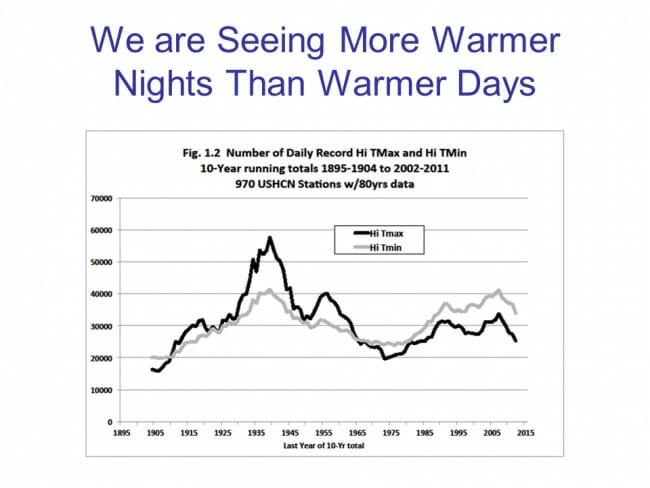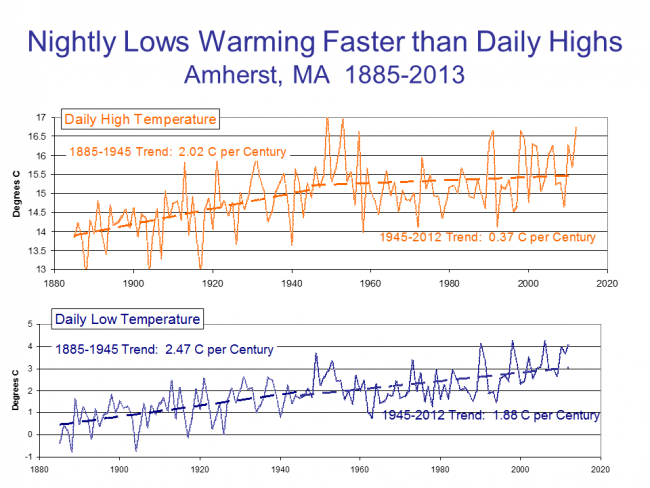Why Global Warming Does Not Necessarily Translate to Daily High Temperature Records
Most folks assume that global warming results in record high daily temperatures, but this is not necessarily the case. When your local news station blames a high temperature record on global warming, they may be wrong for two reasons.
- Most of the temperature stations used by your local news channels for weather are full of urban heat island biases. This is particularly true of the airport temperature that many local news stations use as their official reading (though to be fair UHI has much more effect on evening temperatures than temperatures at the daily high).
- Most global warming, at least in the US where we have some of the best records, does not occur during the day -- it occurs at night
The latter point is surprising to most folks, but as a result we are not seeing an unusual number of daily high temperature records set (many were set in the 1930s and still stand). What we are seeing instead is a large number of record high low temperature readings. This is confusing, but basically it means that the lowest temperature that is reached at nighttime is higher than it has been in the past. The chart below is a bit dated but still holds:
When I give presentations I try to use examples from local data. Here is the comparison of night time warming vs. day time warming in Amherst, MA.
I bring this all up again because Dr. Roy Spencer has done a similar analysis for the US from the relatively new AIRS database (a satellite-based data set that avoids some of the problems of land thermometer data sets like urban heat island biases and geographic coverage gaps). He shows this same finding, that over 80% of the warming we have seen recently in the US is at night.
This is a bit over-complicated because it is looking at temperatures through different heights of the atmosphere when most of you only care about the surface. But you can just look at the 0 height line to see the surface warming trend. Note that in general the data is pretty consistent with the UAH lower-troposphere temperature (satellite) and the NOAA metric (ground thermometers).
No particular point except to highlight something that is poorly understood by most folks because the media never talks about it.


